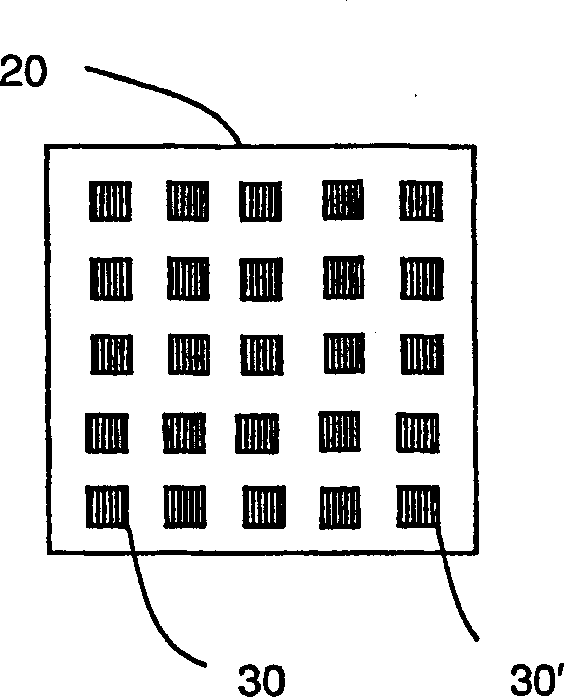Determination of center of focus by parameter variability analysis
A variable and parametric technology, applied in the direction of using optical devices, printing devices, instruments, etc.
- Summary
- Abstract
- Description
- Claims
- Application Information
AI Technical Summary
Problems solved by technology
Method used
Image
Examples
Embodiment 1
[0106] According to the present invention, five fields are exposed with different focus values from -0.2 micron to +0.2 micron in increments of 0.1 micron as focal points. Each field comprises a 5x5 array of evenly spaced diffractive structures. Figures 3A-3E The CD of the diffractive structure in each field is shown graphically. Figure 4 is a graph of the 1-sigma standard deviation of the CD of all 25 diffractive structures in each field. Optimal focus was obtained at the -0.1 micron focus position as described above.
[0107] It is important for real-time focus control and process control to be able to correct for focus drift before it becomes too large. It is thus beneficial to control the CD or other selected features of a subset of diffractive structures that exhibit greater variation in selected features than the variation of all 25 diffractive structures in each field . For example, selected features of diffractive structures located in the corners of the field ...
Embodiment 2
[0110] According to the second preferred embodiment above, Figure 7 Diffractive features emerging from five separate diffractive structures within each of the three fields aimed at different focus values are depicted. In this embodiment, it is readily determined by inspection that the change in properties is minimal for the field aimed at the 0.0 micron focus. Figure 7 The graph in plots the range or distribution of the characteristic strength for each field. As expected, the field aimed at 0.0 focus is the minimum, which is the field at best focus. This method can replace the above-described embodiments for all purposes, including those of process control and focus shift control.
Embodiment 3
[0112] When manufacturing multiple wafers printed with the same mask and with the same process, a typical process control application involves controlling the change timeout of selected features. Figure 8 represents the change of the selected feature measured at one-hour intervals (in this case the measured change in CD as a 3-sigma of the measured values, the center of focus is preferably pre-determined on the illuminated field according to the method of the invention ). Since the same diffractive structures in the same field are measured for each wafer, and each wafer is printed with the same mask and process, the variability should be the same from wafer to wafer. However, the focus of lithography tools can shift over time, which can lead to higher CD deviations such as Figure 8 shown. According to common knowledge, an acceptable amount of variation for process control is 2.4nm. Therefore, the control limit of 2.4nm is indicated by the dotted line at Figure 8 middle....
PUM
 Login to View More
Login to View More Abstract
Description
Claims
Application Information
 Login to View More
Login to View More - Generate Ideas
- Intellectual Property
- Life Sciences
- Materials
- Tech Scout
- Unparalleled Data Quality
- Higher Quality Content
- 60% Fewer Hallucinations
Browse by: Latest US Patents, China's latest patents, Technical Efficacy Thesaurus, Application Domain, Technology Topic, Popular Technical Reports.
© 2025 PatSnap. All rights reserved.Legal|Privacy policy|Modern Slavery Act Transparency Statement|Sitemap|About US| Contact US: help@patsnap.com



